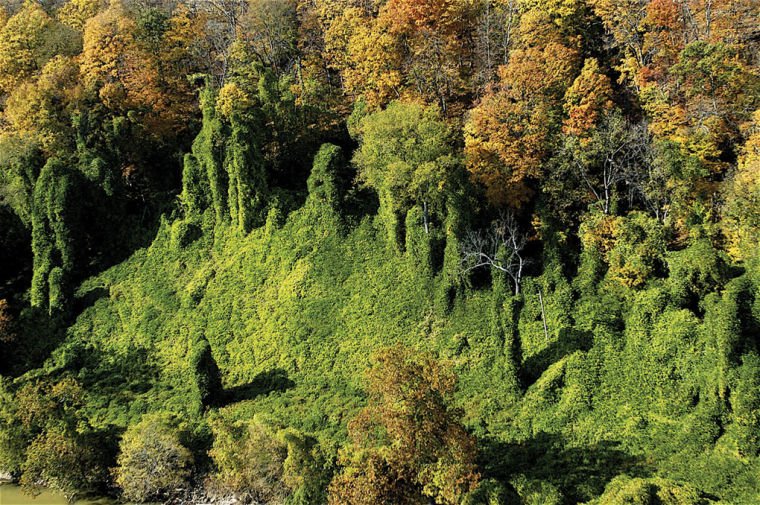An invasive species can be described as any organism that causes ecological harm in a new environment where it does not naturally come from. They have been known to cause the extinction of both plants and animals by competing with resources and reducing biodiversity. Did you know the story of the Kudzu plant that was used all over the South of the United States?
Thousand of Kudzu plants were planted in the South of the United States to fight erosion. The vine spread over one foot each day through runners, rhizomes, and vines rooted from the nodes. It now takes entire areas competing with native plants and trees in the area.
What is Kudzu?
The Pueraria montana or Kudzu plant was brought to the United States in 1876 as an ornamental plant. They are known as the mile-a-minute and the vine that ate the South because of their ability to grow a foot long each day. This creeping and climbing vine terrorized native plants in the South of the United States to their extinction. It eventually crept its way to the Midwest, Northeast, and Oregon.
The Kudzu or kuzu is actually native to Japan and southeast China. They had sweet-smelling blossoms and really sturdy vines. The Soil Conservation Service (SCS) thought it would be an excellent tool for soil erosion control and was planted all over the South of the United States from 1930 to 1950. What the experts at the SCS did not realize is that the Kudzu would overtake anything in its path and would eventually kill any other plant life it comes across. (Source: Nature)
What Problems Does the Kudzu Plant Cause?
As mentioned, the Kudzu plant is a fast-growing vine that easily out-competes any other plant life from native grasses to full-grown trees. The loss of native plants causes an ecological imbalance that eventually harms other plant and animal life that have adapted to them. This ultimately leads to adverse effects throughout the entire ecosystem. Over time, the effects caused by the overgrowing of the Kudzu Plant will lead to species extinction and a loss of biodiversity. (Source: Nature)
Can Climate Change Make the Presence of the Kudzu Plant Even Worse?
As we know, the presence of climate change affects native species gravely. Whereas invasive species like the Kudzu Plant are more flexible to the change, the native plants do not even stand a chance of competing with them during the growing season.
The Kudzu plant thrives in mild winters and sweltering summers. The climate change we experience makes it easier for them to creep and spread throughout the United States. Since they are durable during dry seasons, regional droughts work to their advantage. They can eventually take over native plants that cannot survive the extreme weather. (Source: Nature)
How Can We Get Rid of the Kudzu Plant?
According to research done by Purdue University, to weaken the plant and eventually control its growth, continuous mowing and grazing by both cattle and goats can help. Given that this is just a small to medium growth. The vines should be cut near the ground closest to the roots for larger patches. They are then to be treated with herbicides.
Indiana’s Department of Natural Resources says that if herbicides are to be used, they must be applied late in the summer where the plant is more susceptible to storing the chemicals into their internal storage spaces. This makes the herbicide more effective. (Source: Nature)
